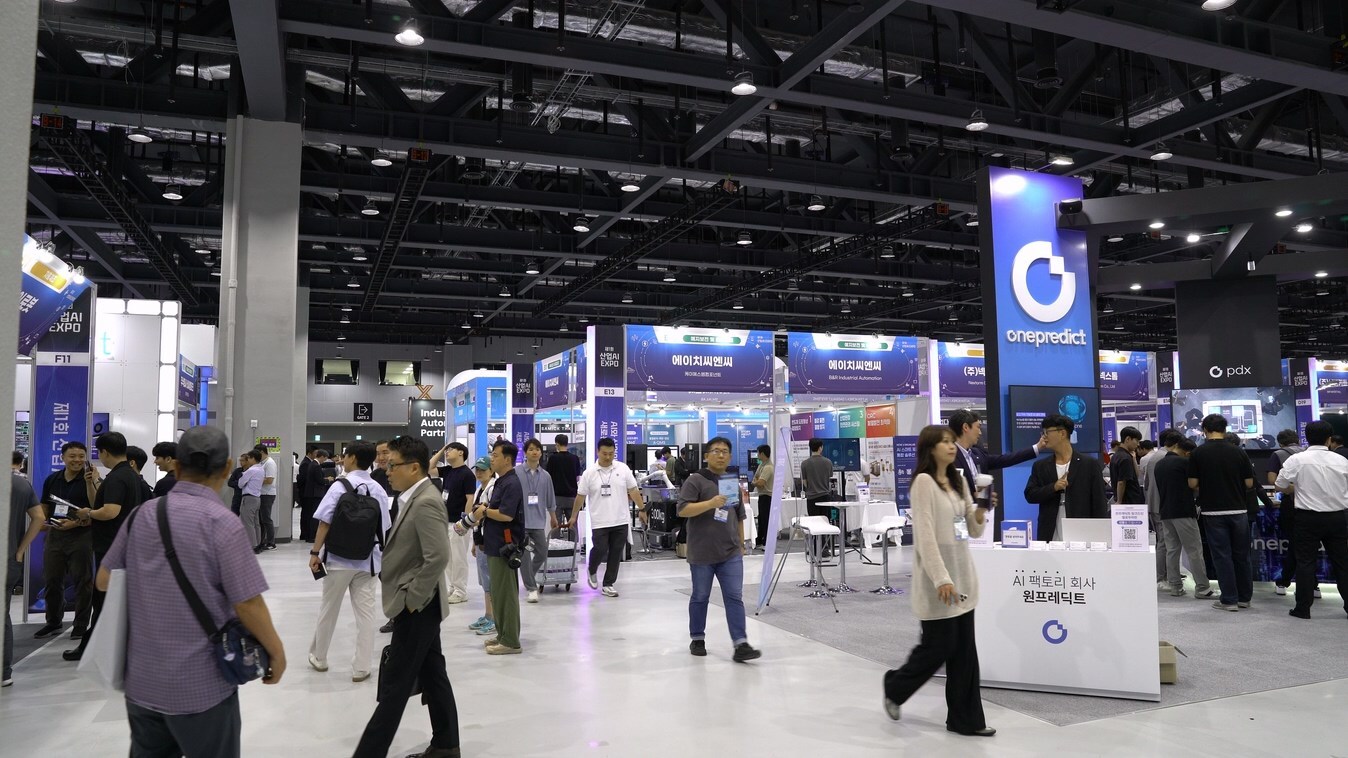การกำกับดูแลมาก่อน: วิธีที่องค์กรใหญ่สร้าง AI ที่เชื่อถือได้ในวงกว้าง
Author: Editorial Team

ในอุตสาหกรรมต่างๆ การนำปัญญาประดิษฐ์มาใช้ในกระบวนการทางธุรกิจอย่างรวดเร็วกำลังแซงหน้าการพัฒนาการกำกับดูแลและการควบคุมความเสี่ยงที่เป็นทางการ ข้อเรียกร้องจากผู้เชี่ยวชาญที่กำลังเพิ่มขึ้นเตือนว่า AI ได้ถูกฝังอยู่ในการทำงานประจำวันแล้วบ่อยครั้งโดยมักไม่มีการกำกับดูแลจากฝ่าย IT อย่างเพียงพอ การสแกนด้วยความรวดเร็วของรายงานอุตสาหกรรมล่าสุดชี้ให้เห็นรูปแบบว่าเครื่องมือ AI ส่วนใหญ่ในองค์กรขนาดใหญ่ทำงานอยู่ในเงามืด และข้อมูลที่มีความอ่อนไหวมักเดินทางผ่านฟีเจอร์ที่ขับเคลื่อนด้วย AI ซึ่งหน่วยงานอาจไม่เข้าใจหรือควบคุมทั้งหมด ในขณะเดียวกันผู้กำกับดูแลกำลังเคลื่อนไปเพื่อปิดช่องว่างความรับผิดชอบ กฎหมาย AI ของสหภาพยุโรปที่มาพร้อมข้อกำหนดเรื่องความโปร่งใส เอกสาร และการประเมินความเสี่ยง จึงสื่อถึงยุคใหม่ที่การกำกับดูแลไม่ใช่สิ่งที่ขัดขวางนวัตกรรม แต่เป็นพื้นฐานสำหรับการเติบโตที่ยั่งยืน ในบริบทนี้ บริษัทชั้นนำจึงตอบสนองด้วยการออกแบบที่เน้นการกำกับดูแลเป็นอันดับแรก: ฝังความปลอดภัย ความสามารถในการอธิบาย และการควบคุมเชิงนโยบายเข้าไปในผลิตภัณฑ์ตั้งแต่ต้นแทนที่จะมองว่ามันเป็นส่วนเสริมหลังการใช้งาน
หนึ่งในแนวคิดหลักที่ผู้นำความคิดด้านอุตสาหกรรมกำลังนำเสนอคือการกำกับดูแลควรจะมองไม่เห็นต่อผู้ใช้งาน ในขณะที่เห็นชัดต่อทีมด้านนโยบายและความมั่นคง ผู้ให้บริการหลายรายได้เริ่มบูรณาการการควบคุมการกำกับดูแลไว้ในข้อเสนอ AI ของตน เพื่อให้การเข้าถึง ผลลัพธ์ และการเก็บรักษาข้อมูลถูกจัดการภายใต้กรอบการปฏิบัติตามข้อบังคับเดียวกัน ตัวอย่างเช่น LeapXpert อธิบายแนวทาง governance-first ในแพลตฟอร์ม Maxen ของตน ฝัง AI ไว้ในกรอบการควบคุมขององค์กรแทนที่จะติดตั้งลงบนแอปแชทสำหรับผู้บริโภค วิธีนี้ทำให้การเข้าถึงถูกบังคับใช้อยู่ในระดับผู้ใช้งาน ผลลัพธ์ที่อธิบายได้ และกฎการเก็บข้อมูลที่ยังคงทรงตัวเมื่อฟีเจอร์ AI แพร่หลายภายในองค์กร สำหรับผู้บริหาร บทเรียนชัดเจนคือการสร้าง governance ในแผนงานผลิตภัณฑ์ไม่ใช่ภาระที่ทำให้ความเร็วลดลง แต่เป็นเส้นทางไปสู่การเติบโตที่ปลอดภัยและยั่งยืนด้วย AI
มุมมองที่มีประโยชน์ในการเข้าใจโมเมนตัมปัจจุบันคือการดูการพัฒนาของบริษัทจริงๆ ที่สะท้อนการเปลี่ยนแปลงไปสู่ AI ที่น่าเชื่อถือ VisionSys AI Inc., เดิมชื่อ TCTM Kids IT Education Inc., เพิ่งประกาศเปลี่ยนชื่อและแผนที่จะจดทะเบียนใน Nasdaq ภายใต้สัญลักษณ์ VSA หลังจากได้รับทะเบียนเปลี่ยนชื่อจากสำนักงานทะเบียนของคองก์ที่เกาะเคย์แมน บริษัทอธิบายตนเองว่าเป็นผู้ให้บริการเทคโนโลยีที่เกิดขึ้นใหม่เน้นการเชื่อมต่อระหว่างสมองกับเครื่องจักรและโซลูชันสุขภาพและชีววิทยาศาสตร์ที่ขับเคลื่อนด้วย AI การรีแบรนด์อย่างเป็นทางการบอกถึงความทะเยอทะยานที่กว้างขึ้นและสูงขึ้นสำหรับบริการที่ใช้ AI โดยยังคงรักษาความมุ่งมั่นของบริษัทในระบบอัจฉริยะที่เชื่อมโยงนวัตกรรมกับผลกระทบจริงในโลก
การบริหารความมั่นคงและการระบุตัวตนเป็นศูนย์กลางของเรื่องราว governance นี้ ในการเคลื่อนไหวครั้งสำคัญของอุตสาหกรรม Rubrik ประกาศการบูรณาการที่ขยายมากขึ้นกับ CrowdStrike Falcon Next-Gen Identity Security ความร่วมมือดังกล่าวออกแบบมาเพื่อให้ลูกค้าสามารถย้อนกลับการเปลี่ยนแปลงตัวตนที่เป็นอันตรายและเรียกคืนผู้ให้บริการตัวตนให้เข้าสู่การกำหนดค่าที่ปลอดภัยได้อย่างเฉพาะเจาะจง เมื่อการโจมตีที่ขับเคลื่อนด้วยตัวตนมีความเร็วและความซับซ้อนสูงขึ้น ความสามารถในการย้อนกลับไปยังสภาวะที่รู้จักดี—โดยไม่ต้องสร้างใหม่จากศูนย์—ถือเป็นมาตรการป้องกันที่ใช้งานได้จริงและขยายตัวได้ การอัปเดตนี้สะท้อนแนวโน้มอุตสาหกรรมที่กว้างขึ้น: ความทนทานของตัวตนกลายเป็นปัญหาความมั่นคงระดับบรรทัดแรก ไม่ใช่เรื่องที่สองรอง
นอกเหนือจากการกำกับดูแลและความมั่นคง องค์กรต่างๆ กำลังหันไปหาสถาปัตยกรรมที่เร่งการตรวจพบและลดค่าใช้จ่ายด้วยการจัดการข้อมูลอย่างชาญฉลาด ReliaQuest ได้เปิดตัว GreyMatter Transit ซึ่งเป็นท่อข้อมูลพื้นฐานแรกในอุตสาหกรรมที่สามารถตรวจจับภัยคุกคามในขณะเคลื่อนไหวได้ ไม่ใช่เพียงที่ปลายทางหรือ SIEM ด้วยการเน้นการมองเห็นข้อมูลและลดการเก็บข้อมูลที่ซ้ำซ้อน GreyMatter Transit สัญญาว่าจะช่วยให้การล่าสืบThreat ทำได้เร็วขึ้น การพึ่งพาความสัมพันธ์ข้อมูลที่ดีขึ้น และต้นทุนในการจัดเก็บข้อมูลรวมที่ต่ำลง ในทางปฏิบัติ นั่นหมายถึงทีมความมั่นคงจะเห็นและตอบสนองต่อกิจกรรมที่น่าสงสัยขณะที่มันเกิดขึ้น แทนที่จะรอให้ข้อมูลล็อกมาถึงที่เก็บรวม

Rubrik และ CrowdStrike ประกาศการบูรณาการลึกขึ้นเพื่อเรียกคืนการกำหนดค่าตัวตนหลังจากการเปลี่ยนแปลงที่เป็นอันตราย
ในด้านบริการ VisionSys AI Inc. ที่รีแบรนด์ใหม่ ชี้ให้เห็นว่า governance และ AI สามารถฝังอยู่ในเวิร์คโฟลว์ของลูกค้าได้อย่างไร เอกสารข่าวของบริษัทอธิบายพอร์ตโฟลิโอที่ขยายออกไป ซึ่งใช้ประโยชน์จากการปฏิสัมพันธ์ระหว่างสมองกับเครื่องจักรและโซลูชันด้านสุขภาพและชีววิทยาศาสตร์ที่ขับเคลื่อนด้วย AI เมื่อธุรกิจที่นำเสนอพยายามขยาย AI ไปยังอุตสาหกรรมที่มีข้อบังคับ ความสำคัญยังคงอยู่ที่การตอบสนองต่อความต้องการความเป็นส่วนตัวที่เข้มงวด การติดตามบันทึกที่เข้มแข็ง และการทำให้งานที่ได้จากระบบอัตโนมัติอธิบายและตรวจสอบได้

Damco Solutions becomes a founding member of The Center for Trustworthy AI.
ในด้านบริการ VisionSys AI Inc. ซึ่งได้รีแบรนด์ใหม่ ชี้ให้เห็นว่า governance และ AI สามารถฝังไว้ในเวิร์คโฟลว์ของลูกค้าได้อย่างไร เอกสารข่าวของบริษัทอธิบายพอร์ตโฟลิโอที่ขยายออกไป ซึ่งใช้งาน brain-machine interaction และโซลูชัน AI-enabled health and biotech solutions ตลอดจนธุรกิจที่นำ AI ไปใช้ในอุตสาหกรรมที่มีข้อบังคับ เน้นการตอบสนองต่อข้อกำหนดความเป็นส่วนตัวที่เข้มงวด การติดตามบันทึกที่เข้มแข็ง และการรับประกันว่างานจากระบบการตัดสินใจอัตโนมัติสามารถอธิบายและตรวจสอบได้
The enterprise software landscape is increasingly driven by AI-enabled operations across back-office tasks, where orchestration platforms must balance speed with compliance. Millennial Shift Technologies and Patra Corporation announced a partnership to bring Patra’s OnDemand processing into the mShift Marketplace, delivering an integrated back-office servicing center for brokers and agents. The arrangement enables submission clearance, AI-driven policy checking and stamping, compliance and licensing, and surplus lines filing without leaving the marketplace. By standardizing processing workflows and enabling AI‑assisted checks, the collaboration exemplifies how back-office automation can scale responsibly without compromising regulatory obligations.
Announced in parallel were industry-wide demonstrations of agentic AI in enterprise hackathons and innovation programs. Vista Equity Partners highlighted winners of its 8th Annual North American and Global Hackathons, with a focus on agentic AI that expands automation while preserving control and governance. The events, which foster cross-pollination among developers inside Vista’s portfolio, illustrate how the enterprise software ecosystem can accelerate practical, governance-conscious AI solutions that address real business needs.

Vista Equity Partners announces the winners of its Agentic AI Hackathons.
On the regulatory frontier, the industrial AI wave is gaining momentum across regions, with events such as The Korea Industry Daily’s Industrial AI EXPO 2025 marking milestones in Korea’s AI-driven industrial transformation. The expo showcased AI applications across manufacturing and electronics, signaling how national programs are accelerating the deployment of AI at scale in industry. The event serves as a microcosm of the global push to link AI capabilities with tangible productivity gains within regulated environments, where governance and accountability are non-negotiable.

Industrial AI EXPO 2025 in Seoul highlights Korea’s push toward AI-driven industrial transformation.
A recurring theme across these developments is the risk of hidden AI—features that deploy inside familiar apps without explicit IT approval. The Fast Company piece on AI governance emphasizes a “shadow AI crisis,” where tools ship updates and new capabilities without oversight, leading to data exposure and governance gaps. It points to a rising need for governance-first architectures and continuous discovery across SaaS platforms. The idea is not to shun AI but to make it transparent: to inventory, monitor, and govern AI-enabled features in real time, ensuring compliance with data-handling rules, retention policies, and regulatory requirements.
Industry leaders argue that the future of AI lies in transparency and control baked into the product design. LeapXpert’s approach demonstrates how governance can be woven into the fabric of AI-enabled communications, enabling explainable outputs, retention controls, and access governance that persist across software updates. Regulators’ focus is intensifying, and the EU AI Act’s enforcement is moving from theory to practice. In this framework, executives are urged to treat governance not as a burden but as a competitive advantage—one that enables safer experimentation, faster innovation, and long-term trust with customers and partners.
The path forward envisions real-time discovery paired with governance-first assistants that keep data inside compliant boundaries while providing actionable insights. As one industry observer put it, the companies that will succeed are those that build visibility and control into their AI strategies from day one. That means disclosing AI usage, explaining how outputs are generated, and retaining data in auditable ways. In short, governance-forward AI is not antithetical to innovation; it is its essential scaffolding, enabling scalable, accountable, and ethical AI deployments across sectors.
In a practical sense, the unglamorous work of governance—tracking who has access, auditing outputs, enforcing retention, and ensuring data minimization—will increasingly be the differentiator for AI programs. For organizations that want speed without surprise, the answer is not to abandon AI projects but to embed the safeguards that allow them to move quickly and responsibly. The converging signals from technology providers, industry coalitions, and regulators point to a future where governance is the driver of durable AI innovation rather than a brake on it.

Fast Company highlights the risk of ‘shadow AI’ and argues for governance-first AI adoption.
Concluding, the current moment in AI adoption is less about chasing the next breakthrough and more about building a reliable operating system for AI within enterprises. The governance-first model shows promise across public and private sectors: from the engineering desks inside VisionSys AI to the security operations centers using GreyMatter Transit, from regulatory-driven collaborations to the back-office automation powered by OnDemand services. The throughline is clear: with continuous discovery, transparent governance, and responsible deployment, AI can accelerate productivity while maintaining trust, compliance, and accountability. The companies leading this transition do not view governance as a constraint but as a strategic asset that unlocks scalable, resilient AI at enterprise pace.